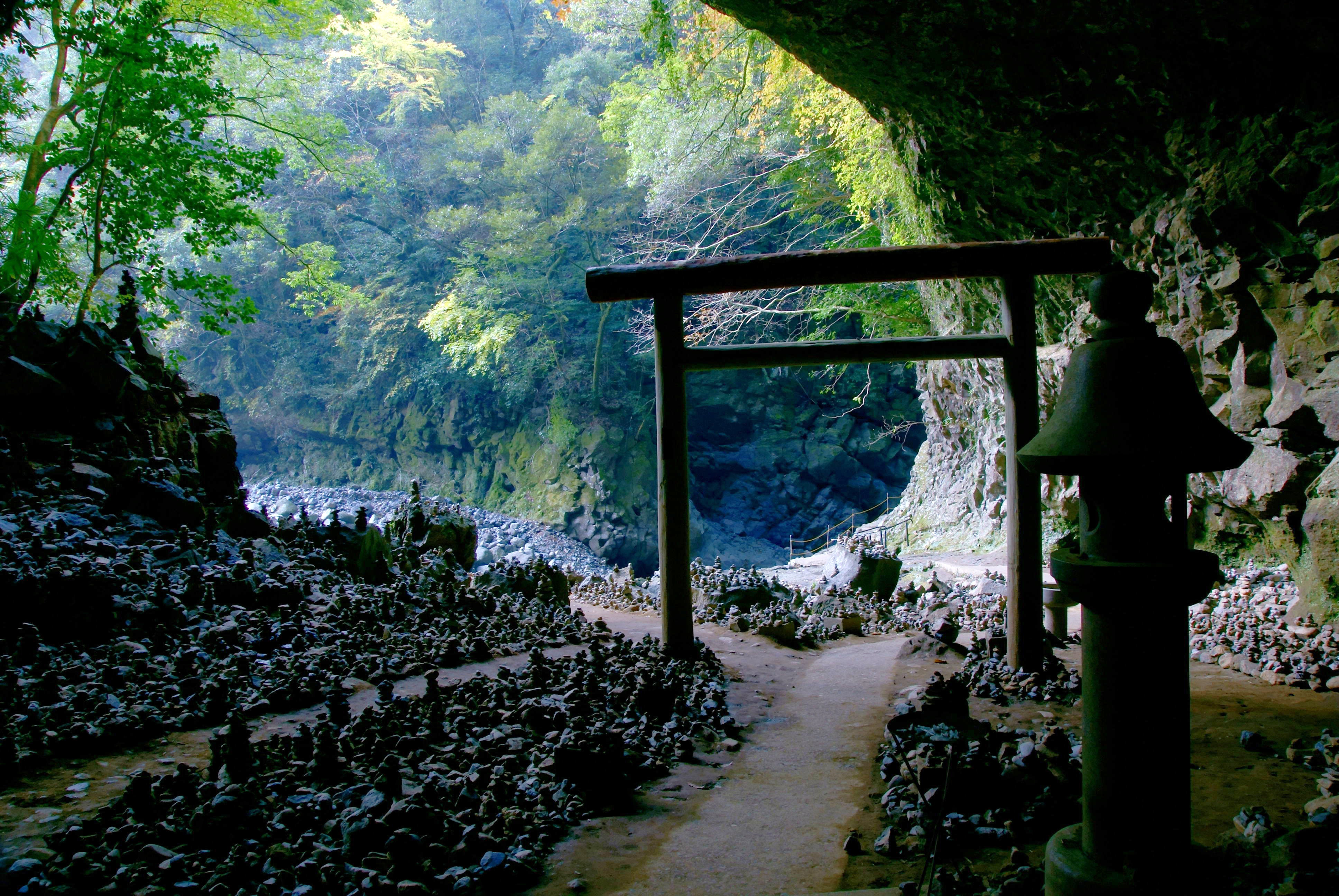Japan’s oldest book, the Kojiki. It dramatically illustrates the history of Japan from the beginning of the world, the appearance of the deities, to the Imperial succession. Behind each impressive episode, there exist numerous “mysteries” that are yet to be solved even today. By exploring each, we will think about the origin of Japanese beliefs and culture.

Takachiho-kyo is thought to be the location of one of the myths in the Kojiki.
In Japan, there is the phase “the eight million deities.” “Eight” is used to represent a large number, likely signifying that there are more deities than anyone can count. The Kojiki, the oldest work of history to describe Japan’s myths, describes many unique deities and heroes who demonstrate special abilities in their exploits.
These abilities are varied and numerous: gods of battle, of the harvest, of guidance. From the standpoint of ability, one can see many similarities with deities from different traditions around the globe.
Deities and Heroes with Special Items
Yamato Takeru was the hero who pacified the East of the country using the sword Kusanagi, one of the three sacred treasures. Many will likely be reminded of King Arthur and his sword Excalibur. There are many deities and heroes who are closely associated with the weapons they wield. Comparing Japan’s Yamato Takeru with other deities and heroes that fought with these kinds of weapons around the world can help bring into focus the characteristics of Yamato Takeru as a deity of battle.
Mythology is the study of comparing numerous deities and myths. By comparing different myths, mythology seeks to examine the cultural features of different myths, the worldview of the people who told them, as well as look into how humanity has moved from place to place and share common thinking and beliefs.
Looking at the Worldview Presented
by the Diverse Deities of the Kojiki
The next installment of this series will introduce different deities from the standpoint of “battle,” “food,” “travel,” “knowledge,” and “healing.” Yamato Takeru will be examined in connection with battle. Food will be looked at in connection with Toyouke, the deity of the outer shrine at Ise. Travel will be discussed with regards to Sarutahiko, who served as a guide to other deities. Omoikane, the wisest in the world of the gods, will be examined with regards to knowledge. Finally, Sukunahikona and his relationship to hot springs will be discussed in connection with healing.
By comparing the diverse abilities possessed by the deities of the Kojiki, we should be able to discover the culture and worldview of ancient Japan, as well as the commonalities in emotion shared between our modern selves and people around the world.
-Kokugakuin University has been selected “as a place for the promotion of the study of the Kojiki” by the private university branding project of the Ministry of Education in 2016.-

published in The Japan News on 24/6/2019
Kikuko HIRAFUJI
Research
Mythology, Religious Study, History of Religion
Papers
Deities in the interwar period(2023/09/08)
Translation Issues in Kojiki: God, Deity, or Spirit?(2016/01/01)

